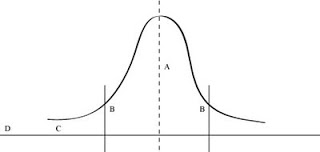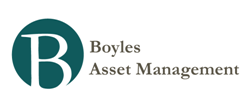Money and Finance

- Institutionalizing Courage - By Rob Arnott
Found via Mebane Faber. Ben Graham liked to distinguish between a temporary loss of value and a permanent loss of capital. The former is a rebalancing opportunity; the latter is a disaster. In a highly diversified portfolio where all the idiosyncratic...
- Howard Marks Memo: What’s Behind The Downturn?
In May, I observed in “How Quickly They Forget” that investors had returned to pro-risk behavior despite the lingering presence of significant macro worries. And then just three months later, a number of exogenous events caused the markets to undergo...
- Howard Marks Memo: The Long View
The Importance of Cycles In my opinion, there are two key concepts that investors must master: value and cycles. For each asset you’re considering, you must have a strongly held view of its intrinsic value. When its price is below that value, it’s...
- Barron's Interviews - Howard Marks And Rob Arnott
From November and December. Interestingly, they both mentioned convertible bonds as an attractive area right now.-Interview with Howard Marks (11/17/2008):-What went wrong with risk management?- First of all, you need a risk manager who knows the business...
- When Second Best Is Better - The Case For Patient Quality Over Bravery (if You Have A Job)
Having a job is great, but its good to have extra income sources as well. A common one is to buy some rental property, but they have always seemed like a hassle to me. For one thing I do not have the handy man skills and for another my friends who do...
Money and Finance
Howard Marks Memo: Volatility + Leverage = Dynamite
One of my favorite adages concerns the six-foot-tall man who drowned crossing the stream that was five feet deep on average. It’s not enough to survive in the investment world on average; you have to survive every moment. The unusual turbulence of the last two years – and especially the last three months – made it possible for that six-foot-tall man to drown in a stream that was two feet deep on average. Should the possibility of today’s events have been anticipated? It’s hard to say it should have been. And yet, it’s incumbent upon investors to prepare for adversity. The juxtaposition of these sentences introduces an interesting conundrum.
Consider these tales from the front lines:
* There had never been a national decline in home prices, but now the Case-Shiller index is down 26% from its peak in July 2006, according to the Financial Times of November 29.
* In my twenty-nine previous years with high yield bonds, including four when more than 10% of all outstanding bonds defaulted, the index’s worst yearly decline was 7%. But in 2008, it’s down 30% (even though the last-twelve-months’ default rate is only about 3%).
* Performing bank loans never traded much below par in the past, and holders received very substantial recoveries on any that defaulted. Now, even though there have been few defaults, the price of the average loan is in the 60s.
The headlines are full of entities that have seen massive losses, and perhaps meltdowns, because they bought assets using leverage. Going back to the diagrams on pages 4-5, these investors put on leverage that might have been appropriate with moderate-volatility assets and ran into the greatest volatility ever seen. It’s easy to say they made a mistake. But is it reasonable to expect them to have girded for unique events?
If every portfolio was required to be able to withstand declines on the scale we’ve witnessed this year, it’s possible no leverage would ever be used. Is that a reasonable reaction? (In fact, it’s possible that no one would ever invest in these asset classes, even on an unlevered basis.)
In all aspects of our lives, we base our decisions on what we think probably will happen. And, in turn, we base that to a great extent on what usually happened in the past. We expect results to be close to the norm (A) most of the time, but we know it’s not unusual to see outcomes that are better or worse (B). Although we should bear in mind that, once in a while, a result will be outside the usual range (C), we tend to forget about the potential for outliers. And importantly, as illustrated by recent events, we rarely consider outcomes that have happened only once a century . . . or never (D).
Consider these tales from the front lines:
* There had never been a national decline in home prices, but now the Case-Shiller index is down 26% from its peak in July 2006, according to the Financial Times of November 29.
* In my twenty-nine previous years with high yield bonds, including four when more than 10% of all outstanding bonds defaulted, the index’s worst yearly decline was 7%. But in 2008, it’s down 30% (even though the last-twelve-months’ default rate is only about 3%).
* Performing bank loans never traded much below par in the past, and holders received very substantial recoveries on any that defaulted. Now, even though there have been few defaults, the price of the average loan is in the 60s.
The headlines are full of entities that have seen massive losses, and perhaps meltdowns, because they bought assets using leverage. Going back to the diagrams on pages 4-5, these investors put on leverage that might have been appropriate with moderate-volatility assets and ran into the greatest volatility ever seen. It’s easy to say they made a mistake. But is it reasonable to expect them to have girded for unique events?
If every portfolio was required to be able to withstand declines on the scale we’ve witnessed this year, it’s possible no leverage would ever be used. Is that a reasonable reaction? (In fact, it’s possible that no one would ever invest in these asset classes, even on an unlevered basis.)
In all aspects of our lives, we base our decisions on what we think probably will happen. And, in turn, we base that to a great extent on what usually happened in the past. We expect results to be close to the norm (A) most of the time, but we know it’s not unusual to see outcomes that are better or worse (B). Although we should bear in mind that, once in a while, a result will be outside the usual range (C), we tend to forget about the potential for outliers. And importantly, as illustrated by recent events, we rarely consider outcomes that have happened only once a century . . . or never (D).

Even if we realize that unusual, unlikely things can happen, in order to act we make reasoned decisions and knowingly accept that risk when well paid to do so. Once in a while, a “black swan” will materialize. But if in the future we always said, “We can’t do such-and-such, because we could see a repeat of 2007-08,” we’d be frozen in inaction.
So in most things, you can’t prepare for the worst case. It should suffice to be prepared for once-in-a-generation events. But a generation isn’t forever, and there will be times when that standard is exceeded. What do you do about that? I’ve mused in the past about how much one should devote to preparing for the unlikely disaster. Among other things, the events of 2007-08 prove there’s no easy answer.
-
So in most things, you can’t prepare for the worst case. It should suffice to be prepared for once-in-a-generation events. But a generation isn’t forever, and there will be times when that standard is exceeded. What do you do about that? I’ve mused in the past about how much one should devote to preparing for the unlikely disaster. Among other things, the events of 2007-08 prove there’s no easy answer.
-
- Institutionalizing Courage - By Rob Arnott
Found via Mebane Faber. Ben Graham liked to distinguish between a temporary loss of value and a permanent loss of capital. The former is a rebalancing opportunity; the latter is a disaster. In a highly diversified portfolio where all the idiosyncratic...
- Howard Marks Memo: What’s Behind The Downturn?
In May, I observed in “How Quickly They Forget” that investors had returned to pro-risk behavior despite the lingering presence of significant macro worries. And then just three months later, a number of exogenous events caused the markets to undergo...
- Howard Marks Memo: The Long View
The Importance of Cycles In my opinion, there are two key concepts that investors must master: value and cycles. For each asset you’re considering, you must have a strongly held view of its intrinsic value. When its price is below that value, it’s...
- Barron's Interviews - Howard Marks And Rob Arnott
From November and December. Interestingly, they both mentioned convertible bonds as an attractive area right now.-Interview with Howard Marks (11/17/2008):-What went wrong with risk management?- First of all, you need a risk manager who knows the business...
- When Second Best Is Better - The Case For Patient Quality Over Bravery (if You Have A Job)
Having a job is great, but its good to have extra income sources as well. A common one is to buy some rental property, but they have always seemed like a hassle to me. For one thing I do not have the handy man skills and for another my friends who do...

